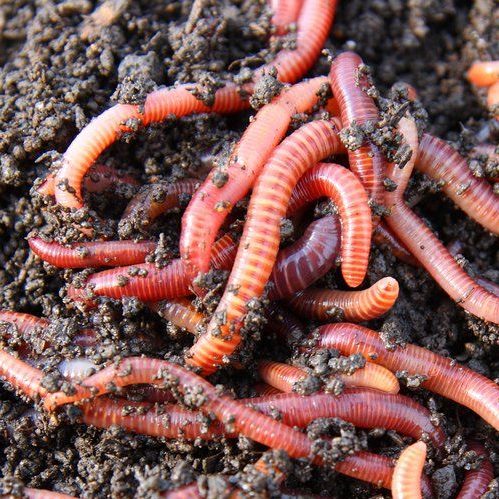Red Wigglers: The Unsung Heroes of Organic Waste Recycling
Red wigglers, or Eisenia fetida, offer as important representatives in the natural waste reusing process, transforming discarded materials into important vermicompost. As the world increasingly looks for remedies to fight waste build-up and improve agricultural productivity, understanding the function of these worms comes to be important.
What Are Red Wigglers?
The amazing resilience of red wigglers, clinically called Eisenia fetida, highlights their essential function in organic waste recycling. These little, reddish-brown earthworms are normally located in decomposing raw material, such as garden compost piles and manure loads. Lake Hickory Bait. Unlike other earthworm types, red wigglers grow in nutrient-rich environments and are highly reliable at breaking down organic materials, making them necessary for vermicomposting

(Lake Rhodhiss Bait)In addition to their duty in waste reduction, red wigglers add to dirt wellness by improving soil structure and oygenation via their delving tasks (Lake Hickory Bait). Their existence in composting systems not just improves decay rates yet likewise advertises a lasting strategy to squander management, showing their relevance in environmental conservation initiatives
Benefits of Composting With Worms
Composting with worms, especially red wigglers, provides countless benefits that improve both waste management and soil health. These worms successfully damage down natural waste, transforming it right into nutrient-rich vermicompost that improves soil. This process increases decomposition, allowing for a faster recycling of cooking area scraps and various other organic products contrasted to traditional composting techniques.
Furthermore, the vermicompost produced by red wigglers is brimming with useful microorganisms, which assist enhance dirt framework, aeration, and wetness retention. This boosts the general wellness of plants, advertising vigorous development and enhanced yields in gardens and farming settings. Moreover, making use of worms in composting lessens the production of greenhouse gases, such as methane, adding to a much more lasting waste administration system.

Exactly How to Begin Vermicomposting
Developing a vermicomposting system is a straightforward procedure that can generate substantial advantages for both waste management and soil enrichment. To start, select an appropriate container, such as a plastic container or wooden box, with adequate ventilation holes to make sure correct air flow. The measurements need to preferably be about 2 feet by 3 feet, permitting adequate room for the worms to thrive.
Next, prepare bed linens product, which can consist of shredded paper, cardboard, or coconut coir. This bed linen must be dampened to produce an appropriate environment for the worms. Once the bedding remains in area, official website present red wigglers (Eisenia fetida) right into the container, usually around one pound of worms for every square foot of surface.
Complying with the placement of worms, include organic waste, such as fruit and veggie scraps, coffee grounds, and crushed eggshells. With these actions, you will successfully start a vermicomposting system that adds to sustainable waste administration and enriches your dirt.
Keeping a Healthy Worm Container
(Red Wiggler Express)Maintaining a worm bin growing needs regular interest and care to make sure the health of the red wigglers and the efficiency of the composting procedure. Appropriate upkeep begins with checking the wetness levels; the container ought to perspire however not saturated. A good general rule is to maintain an uniformity similar to a wrung-out sponge.
Gently mixing the bed linen and food scraps every couple of weeks prevents compaction and ensures that all worms have access to oxygen. In addition, it is essential to feed the worms properly.
If the container ends up being as well hot or cold, the worms may become worried. By faithfully taking care of these aspects, one can maintain a robust and productive worm container.
Effect on Sustainable Living
The successful maintenance of a worm bin not only profits the health and wellness of red wigglers however likewise adds substantially to sustainable living techniques. By reusing organic waste, such as kitchen area scraps and lawn debris, red wigglers aid draw away substantial quantities of material from landfills. This decrease in waste not only decreases greenhouse gas exhausts yet additionally lessens the environmental burden related to waste administration.
Additionally, the castings produced by red wigglers offer as a nutrient-rich organic plant food, enhancing dirt wellness and promoting plant growth. This all-natural choice to chemical plant foods supports lasting agriculture and gardening techniques, lowering dependence on synthetic inputs that can hurt environments. Additionally, worm composting promotes understanding of waste management, motivating people and neighborhoods to take on more sustainable habits.

Conclusion
In summary, red wigglers serve as vital factors to organic waste recycling via their reliable disintegration of organic materials. By incorporating vermicomposting right into waste monitoring approaches, people and neighborhoods can considerably reduce waste while advertising ecological sustainability.
 Emilio Estevez Then & Now!
Emilio Estevez Then & Now! Jennifer Grey Then & Now!
Jennifer Grey Then & Now! Danny Pintauro Then & Now!
Danny Pintauro Then & Now! Earvin Johnson III Then & Now!
Earvin Johnson III Then & Now! Katey Sagal Then & Now!
Katey Sagal Then & Now!